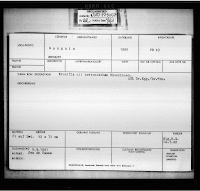 |
| Yellow Christ Source: Humanities Web |
Not everyone is a fan of Paul Gauguin, myself included. But his obsessive sense of esthetics concerning exotic women (read, Tahitian) blended with mystical Catholic religiosity from his days in Brittany can produce a haunting effect on the viewer, innocent, skeptical, or not.
The “Yellow Christ” is one special painting and stands out as one of my favorite works on the theme of crucifixion. Unique in its rendition of Jesus on the Cross, its paganism coupled with ecstatic pain and melancholy is riveting. Even more fascinating is the history of the painting.
Owned by Paul Rosenberg of Paris at least since the 1930s, the “Yellow Christ” ended up in Bordeaux for safekeeping in the face of the Nazi onslaught against Western Europe in the spring of 1940.
Unfortunately, Paul Rosenberg’s collection was a highly coveted prize to unscrupulous agents of the Reich and their dealer friends in Paris. By the spring of 1941, all that could be found in various depots across southwestern France which belonged to Paul Rosenberg was conveyed to Paris and ended up at the Jeu de Paume, including a haul of works found on a cargo ship as it left Bordeaux.
 |
| PR 49, “The Yellow Christ” by Paul Gauguin Source: NARA via ERR Project |
Gustav Rochlitz obtained the Gauguin work on the occasion of the 21st officially recorded exchange (Tausch) with the ERR staff at the Jeu de Paume. The exchange occurred on 24 July 1942. In exchange for the “Three Graces”, a lovely work attributed to the School of Fontainebleau, Rochlitz obtained the Gauguin painting (PR 49) and a painting by Henri Matisse (Unb 353). Both paintings were allegedly shipped to Rochlitz’s warehouse in Baden-Baden in June 1944. I say allegedly because, as it turns out, the Gauguin was located in Paris. Recovered and restituted in 1945, Paul Rosenberg agreed to sell it to the Albright-Knox Gallery in Buffalo, NY, in 1946. The story of the acquisition has a charming twist in that Andrew Ritchie, then director of the Albright-Knox, had been detailed as an art advisor with the US Forces European Theater (USFET) headquarters to ferret out looted collections and aid in their return to their countries of origin. Rosenberg sold the Gauguin to the Albright-Knox in recognition of Ritchie’s efforts on behalf of spoliated collectors such as himself.
The other twist to this story reflects the oft glaring inadequacies of art-historical knowledge regarding artists and their creative output. These lacunae have come back to haunt claimants in their quest for restitution of items attributed to specific artists. When they are particularly famous, like Gauguin or Klimt, the stakes are even higher as the value for the work can increase exponentially. In the case of the “Yellow Christ,” very few people in the art world then and now knew of the existence of a smaller version of the iconic painting.
The infamous art book publisher, Albert Skira, whose wartime activities have been less than honest, spread a rumor in spring of 1945 to the effect that Rosenberg’s painting was sitting in a bank safe in Geneva, Switzerland. The Office of Strategic Services (OSS) launched an investigation in Switzerland and contacted a Gauguin expert, Dr. Lucas Lichtenban who worked at the Basler Kunsthalle. He reported that, indeed, there was a very small work on panel depicting the Yellow Christ (measuring 8 x 5 cm!) which had been in his Basel gallery back in 1928 and was sold to a London concern, Brown and Phillips, in 1932. However, OSS wanted to make sure that there was no link to Paul Rosenberg and the inquest went on, in vain.
Back to the National Gallery of Art in Washington, DC. If you go see the Gauguin exhibit before June 5, 2011, please do so and linger in front of the “Yellow Christ.” Soak it in and ask yourself why on earth there is no explanatory text next to the painting which reflects its extraordinary saga through wartime France and its happy ending at the hands of the Albright-Knox in Buffalo, NY. Transparency does not require much effort, or does it?